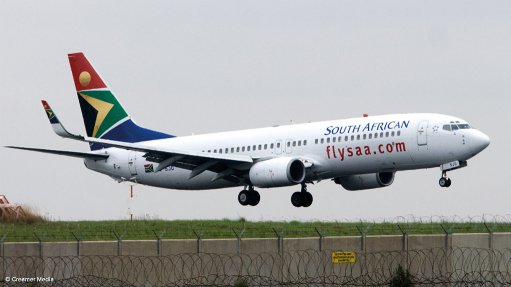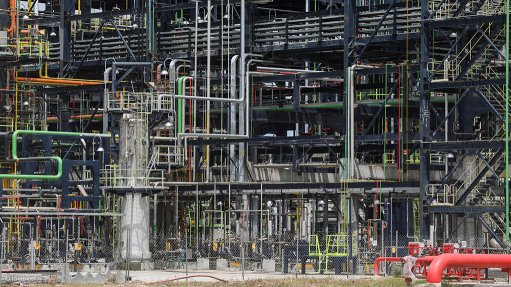The Alhambra and the New World
It took all of 85 minutes and 31 seconds for Japan to inflict South Africa’s first loss in its opening game of the 2015 Rugby World Cup (RWC) – 34-32. Prior to the game, South Africa had played in 29 RWC matches, with 25 wins, or 86.2%, which is the highest winning percentage of all 20 teams involved in this year’s tournament.
Twice RWC champions South Africa, ranked third at the time, had never played thirteenth-ranked Japan before. It was only Japan’s second RWC katsu (victory); the previous win was on October 14, 1991, when Japan beat Zimbabwe 52-8.
Totally unrelated but still befitting a mention – on November 5, 2014, Japan beat Scotland to win the ‘ World Whiskey of the Year’ title. While on this topic, I find myself in Paddy’s Pub – an Irish pub – in Spain. In the city of Granada, in Andalusia, to be exact. It was supposed to have been an evening of relaxation, enjoying a light meal while watching the rugby, after having spent the largest part of the day exploring Granada’s iconic Alhambra.
The Alhambra, Arabic for ‘the red one’, is a palace and fortress complex that was originally constructed in 889 but was largely ignored until it was renovated and rebuilt in the mid-eleventh century by the Moorish emir, Mohammed ben Al-Ahmar, of the Emirate of Granada, who built its current palace and walls. It was converted into a royal palace in 1333 by Yusuf I, Sultan of Granada. The present Alhambra’s Islamic palaces were built for the last Muslim emirs in Spain and the court of the Nasrid dynasty.
This provides a very brief glimpse of the history of the Alhambra, but what is its significance in the discovery of the New World? The Alhambra’s definitive moment came on January 2, 1492, with the surrender by Muhammad XII of Granada to the Emirate of Granada, the city of Granada, and the Alhambra palace to the Castilian forces. The surrender resulted in Christopher Columbus setting sail from Cadiz, Spain, on August 3, 1492, with three ships and 90 men to find an all-water route to Asia. Columbus had patiently waited in Spain for several years for Spain’s war of reconquest against the Moors to come to an end so that he could receive funding for his voyage. King Ferdinand and Queen Isabella, the joint monarchs of Spain, had promised to finance Columbus’ voyage, but only after the last Moorish Kingdom – the Alhambra – had been captured. In return for their financing of Columbus’s voyage, he was to surrender to them all the gold, spices and riches that he might find.
Columbus, born in the Italian seaside city of Genoa in 1451 into a family of weavers, learned to sail from Portuguese seamen. He sailed for many years before moving to Lisbon, Portugal, to try to gain support for a voyage to find a route to India, China and Japan by sailing west across the Atlantic. When he failed to secure funding in Portugal, he moved to Spain.
More than two months after his departure from Cadiz on August 3, 1492 – on October 12 – he landed on an island in the Bahamas that he named San Salvador. He spent the next five months exploring the Caribbean before returning to Spain on March 15, 1493. On September 25, 1493, he embarked on his second voyage, sailing from Cadiz with 17 ships and 1 000 men. He embarked on his third voyage, from Sanlucar, Spain, on May 30, 1498, and a fourth voyage, from Cadiz, followed on May 11, 1502 – this voyage comprised four ships. Columbus died on May 20, 1506, from a heart attack, due to arthritis, and was buried in Seville, Spain. In the US, Columbus Day is celebrated on October 12, commemorating Columbus’s landing in the New World on October 12, 1492.
But was Columbus really the ‘discoverer’ of the New World? In recent years, this assertion has been seriously contested? There are at least three individuals that would be argued to be the discoverer of the New World: Leif Erikson, Zheng He and Marco Polo.
Erikson, an Icelandic explorer, was the first European to set foot in the New World, reaching America in 1000. According to the Sagas of Icelanders, he established a Norse settlement in Vinland, tentatively identified with the Norse L’Anse aux Meadows on the northern tip of Newfoundland in modern-day Canada. For unkonwn reasons, the Vikings only made a few voyages to the New World, rendering Erikson’s discovery unknown to nearly all of Europe, which, at the time, was in the midst of the Crusades. Erikson has been honoured for his discovery in America with at least three statues, the first of which was erected in 1887. Although the exact date of Erikson’s landfall in America is not known, it is known, however, that it was in the fall of the year – and October 9 was settled on. In 1964, the US Congress requested the President to proclaim October 9 as Leif Erikson Day.
In his 2002 book, 1421: The Year China Discovered the World, Gavin Menzies debuted his Asia-centric theory that the Chinese sailor, Admiral Zheng, who is known to have reached Europe and Africa, also crossed the Pacific Ocean to the western hemisphere. He claims that Zheng not only reached the New World but also left colonies there. Zheng’s fleet also sailed around the tip of South America – through the Strait of Megellan, around the Gulf of Mexico and up the Mississippi. In 2013, Menzies and Ian Hudson wrote Who Discovered America?: The Untold History of the Peopling of the Americas. It mentions a recently discovered 1418 map charted by Zheng, which appears to show the New World in some detail. If the map is authentic, it will prove Menzies’ claim that the New World was discovered by the Chinese 70 years before Columbus. Menzies and Hudson’s book also claims that the Chinese had been sailing to the New World, across the Pacific Ocean, for the while.
Then there is another explorer, whom you might recall from your youth, if you are old enough, of course, to have played the swimming pool game – Polo, a thirteenth- century Italian merchant from Venice. Here, a map – Map with Ship – had been discovered that could support the claim that Polo was actually the first European to have discovered America – more than two centuries before Columbus set sail for the New World. The crude map, drawn on sheepskin, shows what appears to be the Bering Strait, Alaska, the Aleutian Islands and the west coast of North America. The Map with Ship comes from a trove of 14 documents that, although found in the 1930s, are only now being studied in depth. If proved to be genuine, the map would show that Polo was aware of the New World two centuries before Columbus. The 14 documents are the topic of Benjamin B Olshin’s book, The Mysteries of the Marco Polo Maps.
Comments
Press Office
Announcements
What's On
Subscribe to improve your user experience...
Option 1 (equivalent of R125 a month):
Receive a weekly copy of Creamer Media's Engineering News & Mining Weekly magazine
(print copy for those in South Africa and e-magazine for those outside of South Africa)
Receive daily email newsletters
Access to full search results
Access archive of magazine back copies
Access to Projects in Progress
Access to ONE Research Report of your choice in PDF format
Option 2 (equivalent of R375 a month):
All benefits from Option 1
PLUS
Access to Creamer Media's Research Channel Africa for ALL Research Reports, in PDF format, on various industrial and mining sectors
including Electricity; Water; Energy Transition; Hydrogen; Roads, Rail and Ports; Coal; Gold; Platinum; Battery Metals; etc.
Already a subscriber?
Forgotten your password?
Receive weekly copy of Creamer Media's Engineering News & Mining Weekly magazine (print copy for those in South Africa and e-magazine for those outside of South Africa)
➕
Recieve daily email newsletters
➕
Access to full search results
➕
Access archive of magazine back copies
➕
Access to Projects in Progress
➕
Access to ONE Research Report of your choice in PDF format
RESEARCH CHANNEL AFRICA
R4500 (equivalent of R375 a month)
SUBSCRIBEAll benefits from Option 1
➕
Access to Creamer Media's Research Channel Africa for ALL Research Reports on various industrial and mining sectors, in PDF format, including on:
Electricity
➕
Water
➕
Energy Transition
➕
Hydrogen
➕
Roads, Rail and Ports
➕
Coal
➕
Gold
➕
Platinum
➕
Battery Metals
➕
etc.
Receive all benefits from Option 1 or Option 2 delivered to numerous people at your company
➕
Multiple User names and Passwords for simultaneous log-ins
➕
Intranet integration access to all in your organisation


















